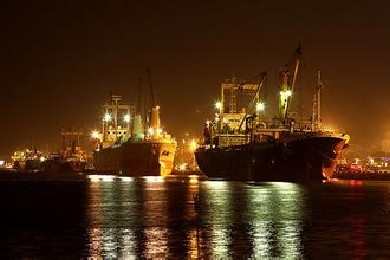Standard Documentation
At entry, a customs official will require the importer to present documents describing the goods and indicating that all entry requirements have been met. In general, if import documents have not already been filed, importers are allowed a certain amount of time to prepare and present the proper documentation. Although these documents differ from country to country, the following are fairly standard.
Application for entry Typically an importer is required to file a brief form to inform the customs authority about the importer's identity and the type and quantity of goods being imported.
Invoice Nearly every country requires some form of commercial invoice, or a pro forma invoice. The commercial invoice is usually fairly detailed, describing the products being imported (such as name, type, classification, quantity, grade, value, markings, labels, packaging) as well as certain aspects of the transaction (such as price per unit and total price).
Bill of lading or air waybill An international carrier usually issues this document to the shipper. It sets forth the conditions of transport and serves as a receipt and evidence of ownership for the goods.
Packing list Shippers commonly enclose or attach a list naming the goods and quantities included.
Declarations or certificates Various declarations or certificates may be required as proof of compliance with import requirements. For example, certificates or declarations may be needed to show ownership, consulate approval, government authorization, quality control, country of origin, treatment for pest infestation, sanitary production, quarantine compliance, and inspection.
Bond or other guarantee In some countries, customs authorities may agree to release goods for entry into the country before the importer has paid all assessed amounts, provided that the importer posts a bond or other guarantee sufficient to cover the amount owed.
Product Compliance
Inspections While import documentation is being completed, customs officials will most likely review the goods for compliance with import laws. This process may include examination of the entire shipment or samples from it, as well as its outer and inner packaging. The shipment may be counted and weighed and, for some products, may be subject to laboratory testing. Inspectors will verify that the shipment complies with the country's laws and matches the invoice description. To reduce freight congestion at the border, some countries have established preshipment or bonded post-shipment inspection programs. Marking and labeling Goods may be rejected if their marking and labeling fail to meet legal requirements. Common mandatory markings include country of origin and name of manufacturer. Labels must usually state product components and adherence to applicable technical standards (such as flammability, energy efficiency, or hazardous emissions). In some countries, goods may be stored while bringing them into conformance, in which case release is delayed for a fixed time after which the goods are rejected if still not properly marked or labelled.
Prohibitions and Restrictions
Quotas To exercise control over the quantity of certain imports, some governments impose absolute or tariff-rate quotas. An absolute quota prohibits additional imports once a fixed number have been entered within a certain period. Under a tariff-rate quota, a fixed amount of goods can be entered at a reduced duty rate during a certain period. Goods imported in excess of that amount are subject to a higher duty rate.
Restricted imports Every country restricts imports of certain products, and customs officials will reject such imports if presented for entry without strict adherence to the law. Imports commonly prohibited or restricted include articles that are perceived as a significant threat to the country's public health and welfare, environment, national interest, and economic interest.
Import Duties
Dutiable status In countries that impose duties (or tariffs) on imports, the customs official's examination of the documents and products in a shipment usually leads to a determination of dutiable status. This is typically a two-step process: classification and valuation. If duties are assessed, the goods are released from customs only after payment is made or, if permitted, after a bond is presented to secure later payment.
Classification In an effort to impose duties uniformly, most countries classify imported goods into categories of a duty schedule. For this purpose, many countries have adopted a version of the international Harmonized System (HS), dividing nearly all products into about 100 product groups.
Valuation If duties are based on an ad valorem rate (a percentage of value), a value must be fixed for the goods. Valuation formulas differ from country to country. Some countries use FOB (free onboard), others use CIF (cost plus insurance plus freight), and still others use transaction value.
Other Assessments
Customs fee Many countries charge a customs processing fee to cover the costs of inspection and approval. It may be levied as a flat charge or a percentage of the value of the goods.
Value-added tax (VAT) Some countries impose a value-added tax on imports. This tax is assessed on the amount by which the value of goods has been increased because of importing. The value is considered to increase, for example, by the tariff assessed, any customs fee paid, and the shipping, insurance, and related transport charges.









